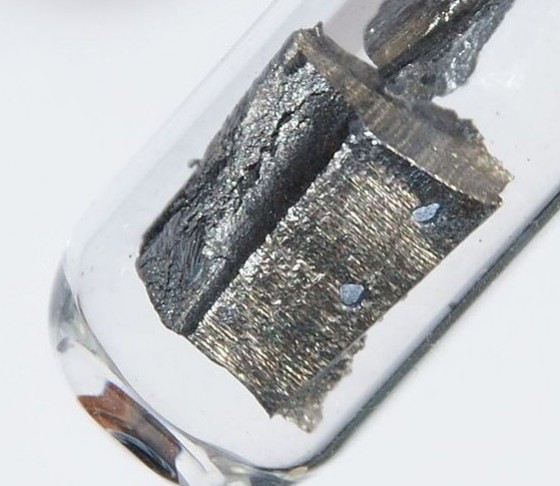
If you think renewable energies will become an increasingly cheaper alternative to petrol – think again now that there’s peak minerals.
As the world moves toward greater use of zero- carbon energy sources, the supply of certain key metals needed for such clean-energy technologies may dry up, inflating per unit costs and driving the renewable energy market out of business. We’ve talked about peak phosphorus for food; now consider that rare earth metals like neodymium which are used in magnets to help drive wind energy turbines, and dysprosium needed for electric car performance are becoming less available on the planet.
Until the 1980s, the most powerful magnets available were those made from an alloy containing samarium and cobalt. But mining and processing those metals presented challenges: samarium, one of 17 so-called “rare earth elements”, was costly to refine, and most cobalt came from mines in unstable regions of Africa.
In 1982, researchers at General Motors developed a magnet based on neodymium, also a rare earth metal but more abundant than samarium, and at the time, it was cheaper.
When combined with iron and boron, both readily available elements, it produced very strong magnets. Nowadays wind turbines, one of the fastest-growing sources of emissions-free electricity, rely on neodymium magnets. In the electric drive motor of a hybrid car neodymium-based magnets are essential.
Imagine that one kilogram of neodymium can deliver 80 horsepower, enough to move a 3,000-pound vehicle like the Toyota Prius. When the second rare earth metal dysprosium is added to the alloy, performance at high temperatures is preserved.
Soaring Demand for Rare Earth Metals
These two metals have exceptional magnetic properties that make them especially well-suited to use in highly efficient, lightweight motors and batteries.
However, according to a new MIT study led by a team of researchers at MIT’s Materials Systems Laboratory and co-authored by three researchers from Ford Motor Company, the supply of both elements neodymium and dysprosium — currently imported almost exclusively from China — could face significant shortages in coming years.
The study looked at ten so-called “rare earth metals,” a group of 17 elements that have similar properties and which have some uses in high-tech equipment, in many cases in technology related to low-carbon energy.
Of those ten, two are likely to face serious supply challenges in the coming years.
Neodymium and dysprosium are not the most widely used rare earth elements, but they are the ones expected to see the biggest “pinch” in supplies, due to projected rapid growth in demand for high-performance permanent magnets.
The biggest challenge is likely to be for dysprosium: Demand could increase by 2,600 percent over the next 25 years while Neodymium demand could increase by as much as 700%.
A single large wind turbine (rated at about 3.5 megawatts) typically contains 600 kilograms of rare earth metals.
A conventional car uses approximately a half kilogram of rare earth materials while an electric car uses nearly ten times as much. The picture starts to become clear, clean technology requires a lot of rare elements, and relying on clean technology is what the whole world is striving for – including the Middle East and North Africa.
Rare earth metals will become the next political obsession.
China has it all
Currently, China produces 98% of the world’s rare earth metals and tightly regulates their export, making those metals “the most geographically concentrated of any commercial-scale resource,” says Kirchain , one of the MIT researchers.
In 2010, China suspended exports of rare earths to Japan over a territorial dispute. The commotion caused neodymium prices to soar to nearly $500 a kilogram by the summer of 2011, from less than $50 a kilogram at the start of 2010. Politically, China will become a vital strategic partner for national security and for clean energy industries in the coming years.
If supply will not meet demand, and is the resulting price surge will make these metals no longer economically viable, the renewable energy sector will also suffer considerably. What will be the alternative then?
One solution is to investigate new sources of these materials, improve the efficiency of their use, identify substitute materials or develop the infrastructure to recycle the metals.
Barbara Reck, a senior research scientist at Yale University, says “the results highlight the serious supply challenges that some of the rare earths may face in a low-carbon society.” The MIT study is “also a vivid reminder that the current practice of not recycling any rare earths at end-of-life is unsustainable and needs to be reversed.”
Image of Neodymium (Nd) via Wikipedia



Linda,
Not all EV motors have magnets. Tesla for example uses AC induction motors, which contain no rare earth metals.
Thank you Tom, hopefully wind turbines and other clean technology will not need rare earth metals in the near future. More AC induction motors for EV then!